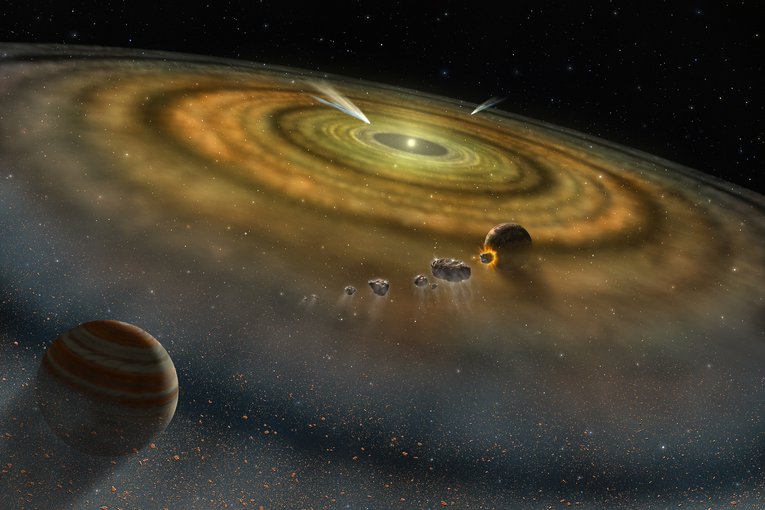
July 23, 2019
Research Highlight
Iron Signatures from the Early Solar System

Artist's conception of the dust and gas surrounding a newly formed planetary system.Image credit: NASA.
A recent study is helping to constrain the isotopic signature of iron (Fe) in the early Solar System using samples from the Allende meteorite. This meteorite fell to Earth over the Mexican state of Chihuahua in 1969, and is the largest carbonaceous chondrite found to date.
Materials in meteorites are used by astrobiologists to study the early Solar System. Currently, the oldest dated materials that scientists have access to are calcium-aluminum-rich inclustions (CAIs). The isotopic compositions of CAIs are distinct from solid materials that formed later in the Solar System’s evolution.
The most abundant metal in the Solar System is iron (Fe), yet the isotopic composition of Fe found in CAIs has not been well constrained. The recent study combined work from a previously studied set of CAI samples with new isotopic work to characterize signatures in magnesium (Mg), calcium (Ca), and Fe. The study highlights differences in isotopic signatures across materials (fine-grained and igneous) from CAI samples. The researchers posit that Fe isotope signatures are derived from events that occurred in the solar nebula, such as condensation and evaporation. Significant secondary alteration of CAIs appears to have occurred in the nebula before the parent bodies of meteorites were formed.
The study, “Combined mass-dependent and nucleosynthetic isotope variations in refractory inclusions and their mineral separates to determine their original Fe isotope compositions,” was published in the journal Geochimica et Cosmochimica Acta. This work was supported by the Emerging Worlds Program. The NASA Astrobiology Program provides resources for Emerging Worlds and other Research and Analysis programs within the NASA Science Mission Directorate (SMD) that solicit proposals relevant to astrobiology research.